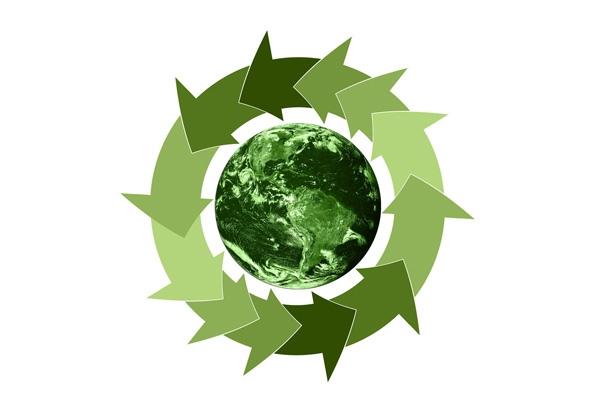

Post pandemic we all find ourselves living in a changing world where remote working and life-work balance has been on many of our lips and spoken in general conversations with friends, family members and colleagues. So while we were all told to “stay at home” a good deal of us began to look more closely about what food we were consuming and where it was sourced, what possessions we no longer needed and the general output of our consumerism and subsequent impact on the planet. This coupled with a cost of living crisis has emphasised the consumer need to cut back on so-called luxury items and more worryingly those basic everyday essentials. Additionally many of us are now looking to mend broken expensive household items, or recycle and repurpose as much as possible.
From a design engineering perspective, we are well aware of the UK Government’s role in the formulation and adoption of the 2030 Agenda for Sustainable Development and aim for manufacturing companies to hit ‘net zero’ by 2050. Thus we're becoming more focused on the consequences to the planet when developing a new product in considering aspects such as dust, noise, or waste, with the purpose being further heightened by the need to limit or remove these pollutants altogether. So whose responsibility is sustainability anyway?
Designer?
As a design engineering consultant within a company often working with injection moulded plastic parts, we feel it is our duty to give great consideration to the materials being used. Many designers and research and development teams are now fully committed to designing products with the planet in mind. These so-called 'green' design engineers are designing products for recycling and incorporating environmental considerations into the overall design of the product.
We are all too well aware that materials can be wasted when designs go wrong, especially if CAD based simulation tools are not utilised appropriately before moving ahead with the development of a product. So quite rightly there is currently a huge focus to substitute primary raw materials for others that are more environmentally friendly or deemed to be sustainable. To select, where possible, recycled or repurposed materials and components that can potentially even be re-used again, thus creating a circular economy.
Supplier/Manufacturer?
In those supply and manufacturing chains we are presently working in, we are aware of the pressure to build sustainable supply chains. To decarbonise operations and to turn to renewable energy and recyclable raw materials. There has recently been a call for more transparency so the consumer can be made aware of ethical resources and manpower used to bring a product to market.
Manufacturers are operating in a challenging time, with the price of raw materials going up and up. This financial impact is coupled and compounded by the focus on meeting sustainability and net zero targets, therefore having to look at making operational efficiencies and improvements to processes to reduce energy consumption on the production line, air emissions and water used during the manufacturing process.
To combat the energy issue some manufacturers have installed solar panels on factory roofs. There are also many companies switching to using electric vehicles, which not only save on fuel costs but are potentially 'kinder to the planet too'? Another huge area for focus is plastic packaging. There is no doubt that it is being recognised as a marine polluter with the implications and consequences rapidly being more understood, with the effect that many supply chains are seeking viable alternatives such as bio-based and biodegradable plastics.
Consumer?
Could it be said that the responsibility for sustainability lies with the consumer? After all it is usually the consumer who applies pressure to a company through campaigning or demonstrating their views with their wallet, undoubtedly with many consumers being increasingly well informed and very concerned.
There has certainly been a huge growth of veganism and other healthy, or planet conscious, lifestyle choices being made since the pandemic. The time spent home working and reassessing what’s important in life, leading to numerous people seeking a new career opportunity that provides an improved work-life balance. There is now an expectation for consumers to be able to repair and recycle rather than replace with new items. Sustainable consumption and ‘buy local’, being some of the key messages being born from the Covid lock down.
But ... it is never easy and the price to pay for sustainable goods is more often than not, considerably higher, so staying cost competitive will be an ongoing and increasing challenge for supply chains with the consumer having to accept that it is something they will have to continue to endure.
Sustainability: so, whose responsibility is it anyway? With the planet warming up, the time for urgent change is now, with no turning back. It is up to all of us to develop our own roadmap. There will be many hurdles to overcome, that’s for sure, anything worthwhile is always harder to achieve. Environmental Regulations are being introduced all the time to force companies into becoming more sustainable, but at the same time scientists are developing new ideas and technology is constantly evolving. As a competitive advantage and seen from another perspective, those companies that 'clean up' faster might encounter green investment opportunities and/or benefit from repeat purchases made by those savvy climate focussed consumers.
Sources:
https://www.sustainability.com/globalassets/sustainability.com/thinking/pdfs/2022/esi-sustainability-trends-report-2022-2.pdf
https://www.bpf.co.uk/
https://www.makeuk.org/
https://pharmaceuticalmanufacturer.media/pharma-manufacturing-resources/latest-issue/european-pharmaceutical-manufacturer-may-2022/
https://www.imeche.org/
https://www.gov.uk/government/topical-events/uk-voluntary-national-review-of-progress-towards-the-sustainable-development-goals

